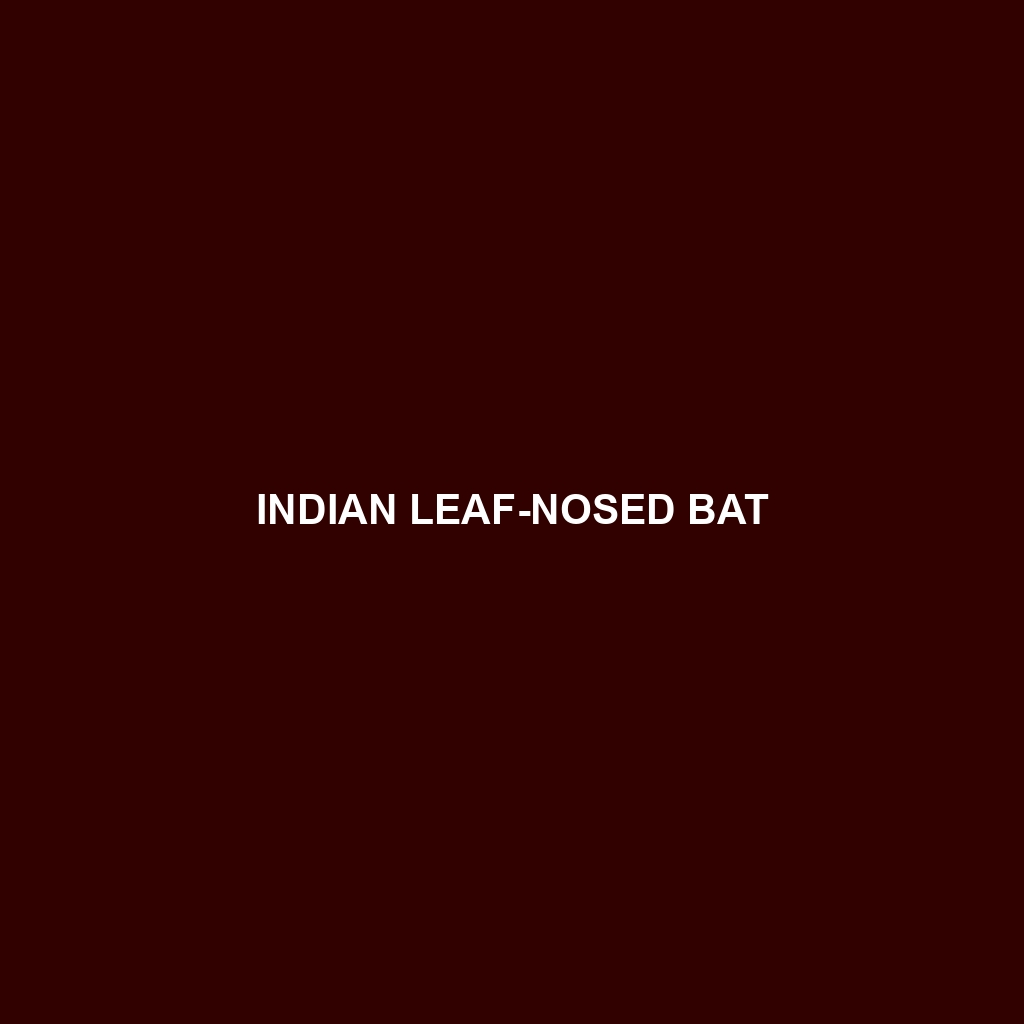Indian Leaf-nosed Bat
Common Name: Indian Leaf-nosed Bat
Scientific Name: Hipposideros auritus
Habitat
The Indian Leaf-nosed Bat is primarily found in South Asia, specifically in countries like India, Sri Lanka, Nepal, and parts of Myanmar. These bats favor tropical and subtropical forests, often roosting in caves, old buildings, or dense foliage. They thrive in environments with high humidity and abundant insect life, preferring areas where vegetation is dense to support their foraging habits.
Physical Characteristics
The Indian Leaf-nosed Bat typically measures about 10 to 12 centimeters in body length, with a wingspan of approximately 30 to 35 centimeters. They exhibit a distinctive leaf-shaped structure on their noses, which aids in echolocation. Their fur is usually a mix of brown and gray tones, contributing to their camouflage within their natural habitat. The ears are long and pointed, with the wings being broad and well-adapted for maneuvering through dense vegetation.
Behavior
Known for their social structures, Indian Leaf-nosed Bats often roost in colonies that can number in the hundreds or thousands. They are primarily nocturnal and engage in foraging activities at night, using echolocation to navigate and locate prey. Their social interactions are complex, involving vocalizations and grooming behaviors that strengthen colony dynamics.
Diet
The diet of the Indian Leaf-nosed Bat mainly consists of insects, with a particular preference for moths, beetles, and other flying insects. They play a crucial role in pest control within their environments. Their foraging techniques involve capturing prey mid-flight, aided by their agility and sharp senses, making them efficient hunters.
Reproduction
Reproductive activities of the Indian Leaf-nosed Bat typically occur during the warmer months. Females give birth to a single pup after a gestation period of about 6 to 7 weeks. Maternity colonies are formed where females care for their young collectively, providing a safer environment for offspring until they are mature enough to fly.
Conservation Status
The current conservation status of the Indian Leaf-nosed Bat is listed as Vulnerable on the IUCN Red List. Their populations are threatened by habitat loss due to deforestation, urbanization, and disturbance of roosting sites. Conservation efforts are crucial to preserve their habitats and promote public awareness of their ecological significance.
Interesting Facts
One fascinating aspect of the Indian Leaf-nosed Bat is their ability to utilize the unique shape of their nose for sophisticated echolocation. Additionally, they have been observed to have strong social bonds within colonies, which is unusual among bat species, where solitary behavior is often more common.
Role in Ecosystem
As insectivores, Indian Leaf-nosed Bats play a vital role in their ecosystem by controlling insect populations, thus maintaining a balance in the food web. Their presence indicates a healthy environment, and they are key players in pollination processes, although primarily indirectly through their feeding habits. Loss of this species can have cascading effects on biodiversity and ecological health.
